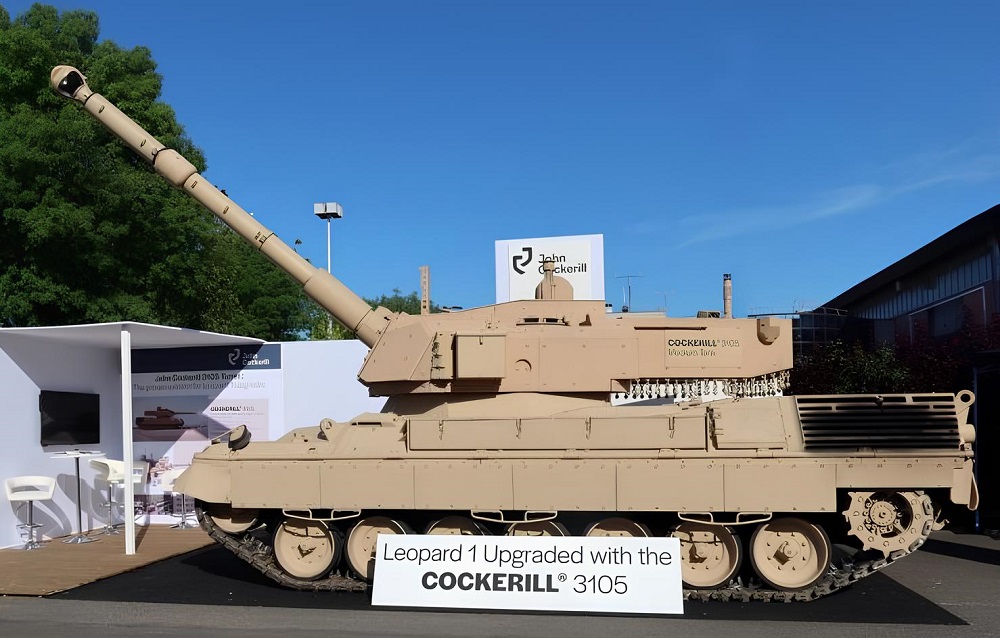.
I wrote in the past about tanks that have a unusually high maximum elevation of their main gun and can be used for indirect fires and for short range air defence.
/2010/04/medium-calibre-allround-option.html
/2017/01/42-elevation-tank-turrets.html
/2023/04/a-compact-and-agile-exploitation-brigade.html
/2023/09/the-directindirect-fires-armour.html
I have never elaborated on the technical side of the shot, but the technical details matter for understanding the concept.
A tank gun has a very high muzzle velocity even with a high explosive shell (it won't be less than 700 m/s). A variable propellant strength may be used and special shells or fuses may increase drag to brake the shell, but a basic tank gun HE cartridge is going to produce a cannon-like, very flat trajectory.
This makes it difficult to hit a flat target with a point detonating (impact) fuse. A slight error in elevation or a slight deviation of muzzle velocity leads to a much greater range error of the shot than the shot's lethal radius.
Historically, the best use for cannons in indirect fire at short and medium distances was to use a bouncing shot (cannon shells bounce off flat ground when fired at no more than 10° elevation as a rule of thumb). A delay fuse would then cause the explosion when the shell is airborne after bouncing off the ground. The fragmentation effect of this would be greater than with point detonation, but the dispersion would be bad.
How about proximity fuses? Again, quite the same as with point detonating, just worse. The fuse may trigger much too early, especially when it overflies a building. Even a time-gated proximity fuse wouldn't be satisfactory.
Normal time fuses use 0.1 second intervals. A shell travelling at 600 m/s would thus fuse somewhere within 60 metres - unsatisfactory, as the lethal radius even of a 120 mm HE shell in much smaller.
The technical solution is to use more modern fuses that deliver accuracy of about ten metres. The elevation may still be off a little, but an explosion 3 m lower than intended or 3 m higher than intended isn't a too terrible variation.
Here's an example of such a very accurately fusing fuse.
This can be used to explode the shell inside a building (setting the timing accordingly and disabling a point detonation feature if present).
This can be used to shoot at aerial targets in the way heavy anti-air artillery did in WW2, just much more accurately.*
Ideally, the fuse would have selectable point detonation (quickest direct fire shot mode that's somewhat useful on everything, including messing up a T-14 tank turret) and delay (for exploding BMPs, BTRs and rooms in a building)
The technology for proper fuses for very flat trajectory shots hasn't been available for very long. Most main battle tanks of today are from a 1970's conceptual design and prototyping generation, when such fusing wasn't on the horizon yet. The Chinese have newer designs, but they were catching up. The South Koreans have a newer MBT design, but they have mostly hilly to mountainous terrain. Same with the Japanese. The current equipment is thus no argument against the validity of the direct/indirect firepower tank concept. It makes sense that the in-service tanks lack it and at the same time the concept may be entirely valid with our current technology.
Back to bending that flat trajectory a bit: The muzzle velocity depends on the propellant temperature. One might have a cool/cooled and a warm/heated cartridge compartment to enable a choice between two muzzle velocities. The difference wouldn't be great, though. This would not enable shooting over most hills in the line of sight.
Another possibility is to use a fuse or shell feature that deploys a braking element, such as in trajectory-correcting munitions. Another analogy is the nose or drag ring that can be added to rockets of manually loaded multiple rocket launchers to slow them down and thus reduce the often terribly long minimum shot distance.
High tech approaches include variable injection of liquid propellant, use of electro-chemical-thermal gun principle and so on, but such already researched and tested technologies appear to find no users for good reasons.
In the end, a fixed cartridge with combustible case is realistic, a semi-fixed cartridge for varying the propellant strength by adding or removing modules would only be reasonable if the tank is used mostly in indirect fires. Another option is to simply have two different kinds of HE cartridges with combustible case; one for high muzzle velocity and one for low muzzle velocity. The latter could be used to shoot over hills, but it would have a reduced maximum range and longer time of flight. The shell orientation at explosion would also differ, leading to a different optimisation for fragmentation pattern and thus a different shell design.
The great potential of the concept of a direct/indirect/antiair firepower tank is in the versatility. This may go so far as to enable a much smaller and thus much more agile tank brigade without a dedicated artillery component. I described that concept in the 3rd and 4th link above. The same brigade would have dozens of assets capable of sniping away observation drones without need for any dedicated air defence vehicle.
S O
defence_and_freedom@gmx.de
*: Proximity fusing may be preferable for this, but ordinary artillery proximity fuses meant to fuze a couple metres above ground don't work on air targets. Their safety feature keeps them from exploding before the zenith of the trajectory was passed.

